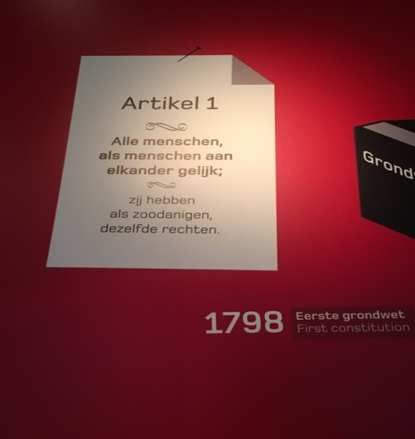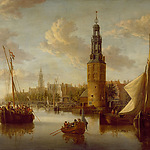Mildred Roethof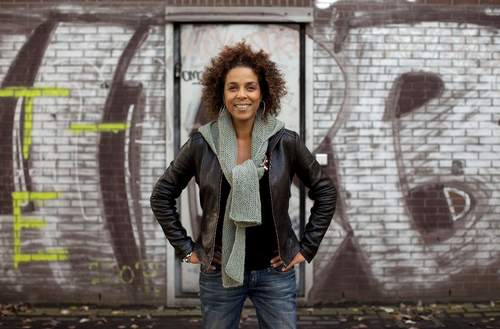
Abraham Storck, Het Scheepgaan van compagnietroepen bij de Montelbaanstoren, ca. 1680. 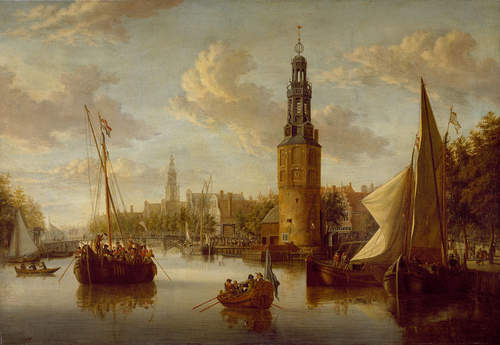
For example, in this picture painted in 1680, we see men being transported in boats from Amsterdam, via the (then) Zuiderzee, to the island of Texel in the north of the Netherlands, and them enlisted to serve as sailors for the Dutch East India Company. It has a strong hetero-macho association. “But how do we know if some of these ‘men’ were not women dressed as men?” asked Mildred. “Looking for a way to escape, perhaps even looking to find love in the arms of other, similarly-inclined women?”
An interesting, authenticated example of a woman posing as a man in order to enter military service is that of ‘Maria of Antwerp’ who, in the 18th century, enlisted as a (male) soldier no less than three times and married a woman twice. Whether she did this as a means of financial security (there was always a demand for soldiers at that time) or out of love for her ‘fatherland’, is a more speculative matter. For an extensive narrative of her story – in Dutch – see here. A condensed version in English is also available.
In the true spirit of the Sharing Stories lgbtiq+ guided tours, Mildred constantly asked us to examine what we would traditionally interpret as ‘normal’. At one moment during the tour, she paused by the enormous statue of Goliath in the Museum’s Schuttersgang and posed the question: “In the 17th century when this statue was created, people would have accepted this as an authentic representation of the giant, they didn’t know otherwise, they didn’t question it.”
Are we really all equal?
The group stood for quite a while by this exhibit! In The Netherlands’ first Constitution drawn up in 1798 (and based on the French Constitution of 1793) it unequivocally states: “All people are equal to each other.” Is that true, nearly 250 years later in 2019? “Fine on paper,” said Mildred, “but how is it in reality?” In law, the lgbtiq+ community are protected and have (almost!) the same legal rights as other members in our society, but are they treated the same in society? “How do we experience the sentiments expressed in this statement in the here and now?” asked Mildred.
Mildred highlights an exhibit in Hall 2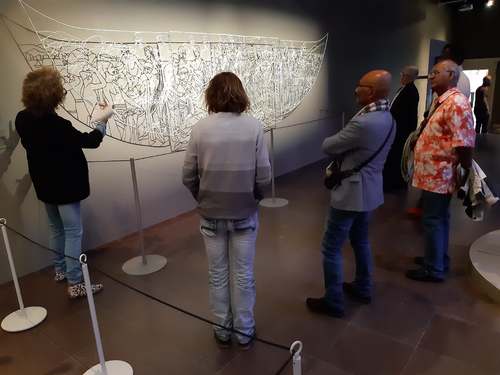
The Netherlands – a black history?
The section in the museum that highlights The Netherlands’ history of colonialism and slavery made a deep impression on the participants. “This is the image that tourists to Amsterdam don’t get to see,” said one of the participants. “they are not shown this reality.” For many people, it was dark period in what was generally – and perhaps euphemistically - known as ‘The Golden Age’. Miriam praised the museum for recently taking the decision not to use the term ‘Golden Age’ in its description of the Netherlands activities during the 17th century. Curator Tom van Molen has stated that ‘In Western historiography, the ‘Golden Age’ occupies an important place that is strongly linked to national pride, but positive associations with the term such as prosperity, peace, wealth and innocence do not cover the charge of historical reality in this period. The term ignores the many negative sides of the 17th century such as poverty, war, forced labour and human trafficking.”
At the end of the tour, Mildred emphasized the urgent need to look at things from other angles, not to just accept that which has been traditionally accepted. In particular, not to place a hetero-normative perspective on things which we see and observe. And to apply this not just to historical exhibits in a museum but also in our daily lives.
Text written by Brian Jones, volunteer lgbtiq+/Queering programme Amsterdam Museum
Voor een Nederlandse versie van deze tekst, zie hier / For a Dutch version of this text, click here

